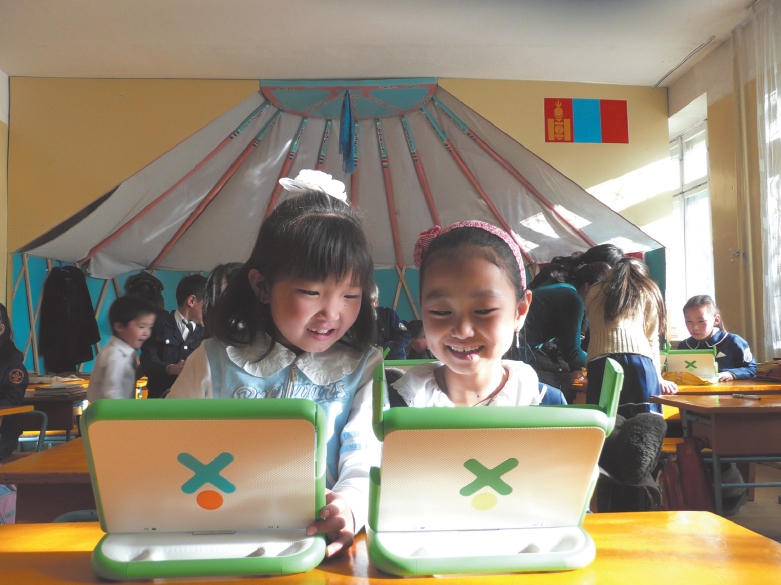Access: The Fight to Prevent a Digital Divide
A key economic issue related to the Internet is whether the cost of purchasing a personal computer and paying for Internet services will undermine equal access. Coined to echo the term economic divide (the disparity of wealth between the rich and poor), the term digital divide refers to the growing contrast between the “information haves,” those who can afford to purchase computers and pay for Internet services, and the “information have-nots,” those who may not be able to afford a computer or pay for Internet services.
Although about 80 percent of U.S. households are connected to the Internet, there are big gaps in access, particularly in terms of age and education. For example, a 2012 study found that only 41 percent of Americans over the age of sixty-five go online, compared with 74 percent of Americans ages fifty to sixty-four, 87 percent of Americans ages thirty to forty-nine, and 94 percent of Americans ages eighteen to twenty-nine. Education has an even more pronounced effect: Only 43 percent of those who did not graduate from high school have Internet access, compared with 71 percent of high school graduates and 94 percent of college graduates.30
Another digital divide has developed in the United States as Americans have switched over from slow dial-up connections to high-speed broadband service. By 2012, 68 percent of all Internet users in the United States had broadband connections, but given that prices are tiered so that the higher the speed of service the more it costs, those in lower-income households were much less likely to have high-speed service. A Pew Internet & American Life Project study found that one in five American adults does not use the Internet. Non-users were predominantly senior citizens, Spanish-language speakers, those with less than a high school education, and those living in households earning less than $30,000 per year. The primary reason given by non-users for why they don’t go online is they don’t think the Internet is relevant to them.31
The rising use of smartphones is helping to narrow the digital divide, particularly along racial lines. In the United States, African American families generally have lagged behind whites in home access to the Internet, which requires a computer and broadband access. However, the Pew Internet & American Life Project reported that African Americans are the most active users of mobile Internet devices. Thus, the report concluded, “the digital divide between African Americans and white Americans diminishes when mobile use is taken into account.”32
Globally, though, the have-nots face an even greater obstacle crossing the digital divide. Although the Web claims to be worldwide, the most economically powerful countries like the United States, Sweden, Japan, South Korea, Australia, and the United Kingdom account for most of its international flavor. In nations such as Jordan, Saudi Arabia, Syria, and Myanmar (Burma), the governments permit limited or no access to the Web. In other countries, an inadequate telecommunications infrastructure hampers access to the Internet. And in underdeveloped countries, phone lines and computers are almost nonexistent. For example, in Sierra Leone, a nation of about six million in West Africa with poor public utilities and intermittent electrical service, only about ten thousand people—about 0.16 percent of the population—are Internet users.33 However, as mobile phones become more popular in the developing world, they could provide one remedy to the global digital divide.
Even as the Internet matures and becomes more accessible, wealthy users are still more able to buy higher levels of privacy and faster speeds of Internet access than other users. Whereas traditional media made the same information available to everyone who owned a radio or a TV set, the Internet creates economic tiers and classes of service. Policy groups, media critics, and concerned citizens continue to debate the implications of the digital divide, valuing the equal opportunity to acquire knowledge.
